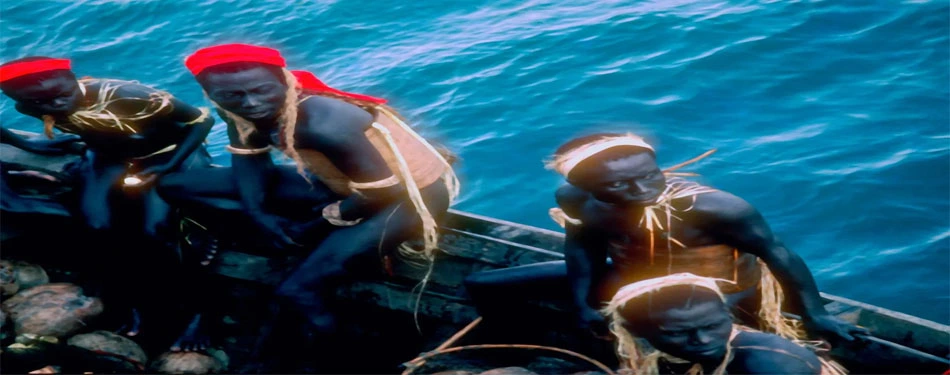From Past to Present: Andaman Official Language Through Time

The Andaman Islands, a mesmerizing archipelago in the Bay of Bengal, are not only known
for their breathtaking natural beauty but also for their rich cultural and linguistic
heritage. The history of Andaman is a fascinating journey through time, revealing a
mosaic of languages and cultures that have thrived on these shores. Central to this
journey is the evolution of the Andaman official language, which mirrors the islands'
diverse history, colonial past, and modern-day multicultural society. This exploration
takes us from the ancient origins of the most spoken language in Andaman to the
present-day linguistic landscape, highlighting the significant role language plays in
shaping the identity of the Andaman and Nicobar Islands.
The Ancient Tongues: Roots of Andaman and Nicobar Language
The original inhabitants of the Andaman Islands, the Great Andamanese tribes, spoke a
variety of languages that significantly differ from any other language family known to
linguists. These languages, deeply entwined with the tribes' daily life, culture, and
survival, offer a glimpse into the rich prehistoric past of the islands. However, with
the arrival of external influences and the tragic decline of the indigenous population,
many of these ancient languages have sadly vanished or are on the brink of extinction.
Colonial Intrusions and Linguistic Shifts
The history of Andaman took a dramatic turn with the arrival of British colonialists in
the 19th century. This period marked significant changes, not only in governance and
lifestyle but also in the linguistic landscape of the islands. English became the
language of administration, law, and education, laying the foundation for what would
become the official language of Andaman in the colonial context. This era also saw the
influx of settlers, prisoners, and laborers from different parts of India and beyond,
introducing a plethora of languages and dialects to the islands.
Post-Independence: Hindi as the Andaman Official Language
Following India's independence, there was a concerted effort to unify the diverse
population of the Andaman and Nicobar Islands under a common linguistic and cultural
identity. Hindi was adopted as the official language of Andaman, reflecting its status
as the national language of India. This decision aimed to foster unity, facilitate
administration, and promote communication among the islands' inhabitants, who hailed
from various linguistic backgrounds.
Want to know more about Andaman, please visit here
The Modern Mosaic: Most Spoken Language in Andaman
Today, the linguistic landscape of the Andaman Islands is as diverse and vibrant as its
people. While Hindi remains the Andaman official language, Bengali holds the title of
the most spoken language in Andaman, reflecting the significant Bengali population on
the islands. Other languages, including Tamil, Telugu, Malayalam, and Nicobarese, among
others, contribute to the rich tapestry of languages spoken across the archipelago. This
multilingual environment underscores the islands' historical migrations and settlements,
showcasing a harmonious blend of languages and cultures.

Preserving the Past, Embracing the Future
The journey of the Andaman official language from the ancient tongues of the Great
Andamanese to the present-day multilingual society is a testament to the islands'
resilience and cultural amalgamation. It highlights the importance of language in
preserving history and heritage while adapting to changing times. The challenge now lies
in balancing the promotion of the official language of Andaman with the preservation of
indigenous languages, which are invaluable keys to understanding the islands' past.
Efforts are underway to document and revive the indigenous languages of the Andaman
Islands, with linguists and researchers working closely with the remaining speakers of
these ancient tongues. At the same time, educational initiatives aim to ensure that the
younger generations are proficient in the official language of Andaman, preparing them
for a future that respects their rich heritage while engaging with the wider world.
Check out best tour packages of Andaman
Conclusion: The Linguistic Legacy of the Andaman Islands
The evolution of the Andaman official language is a fascinating narrative of survival,
change, and unity. It reflects the islands' journey through ancient civilizations,
colonial rule, and into the era of independence and beyond. Today, the Andaman and
Nicobar language landscape serves as a living museum, showcasing the diverse influences
that have shaped these islands' history and culture.
As we look to the future, the key to preserving this linguistic diversity lies in
recognizing the value of each language spoken on the islands. From the official language
of Andaman to the ancient dialects of its earliest inhabitants, each holds an
irreplaceable piece of the Andaman story. Embracing this multilingual heritage not only
honors the past but also paves the way for a future where the Andaman Islands continue
to be a vibrant mosaic of languages and cultures, united yet unique in their diversity.

